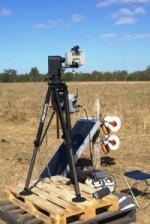5585 Guilford Road • Madison, WI 53711-5801 • 608-273-8080 • Fax 608-273-2021
www.agronomy.org
Twitter | Facebook
NEWS RELEASE
Contact: Hanna Jeske, Associate Director of Marketing and Brand Strategy, 608-268-3972, hjeske@sciencesocieties.org
Measuring Methane
 MADISON, WI, MARCH 1, 2011 – Methane is an extremely potent greenhouse gas. Wetlands, gas hydrates, permafrost, termites, oceans, freshwater bodies, non-wetland soils, are all natural sources of atmospheric methane; however, the majority of methane presence ca n be accredited to human-related activities. These activities include: such as fossil fuel production, biomass burning, waste management and animal husbandry. The release of methane into the atmosphere by cattle and other large grazing mammals is estimated to account for 12 to 17% of the total global methane release.
MADISON, WI, MARCH 1, 2011 – Methane is an extremely potent greenhouse gas. Wetlands, gas hydrates, permafrost, termites, oceans, freshwater bodies, non-wetland soils, are all natural sources of atmospheric methane; however, the majority of methane presence ca n be accredited to human-related activities. These activities include: such as fossil fuel production, biomass burning, waste management and animal husbandry. The release of methane into the atmosphere by cattle and other large grazing mammals is estimated to account for 12 to 17% of the total global methane release.
Journal of Environmental Quality publishes original research, reviews and analyses, and environmental issue articles that address anthropogenic impacts on water, soil, and the atmosphere and pertain to some aspect of environmental quality in natural and agricultural ecosystems.